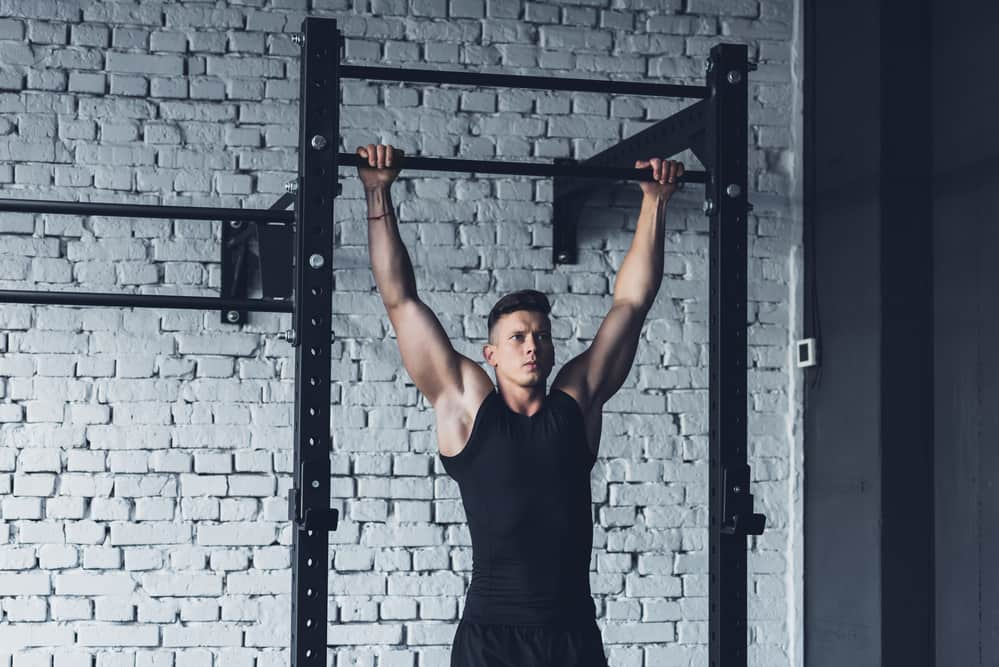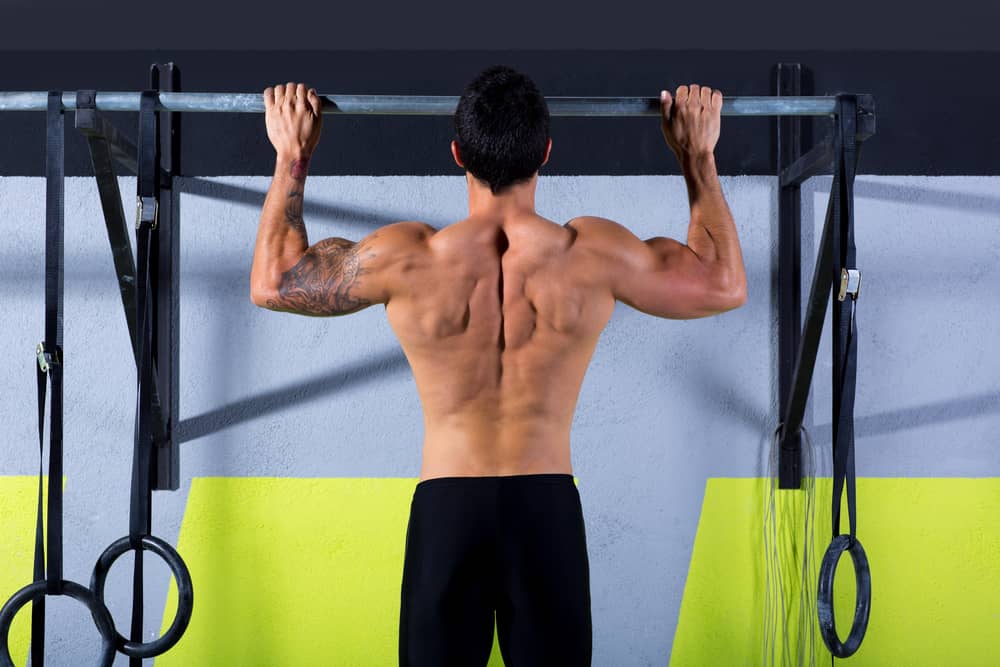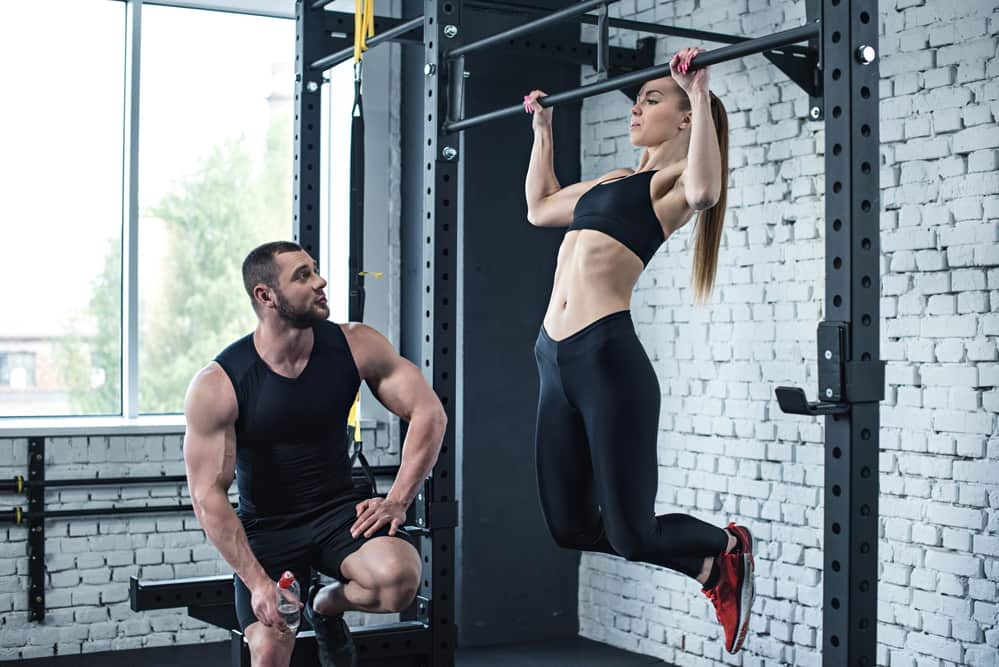Is a pull-up bar worth the investment? The quick answer to this is a resounding yes. Because aside from being space-efficient equipment, a pull-up bar offers several benefits.
Pull-ups target several muscles simultaneously, including those in your back, shoulders and arms. In turn, you develop considerable body strength and coordination. This health benefit helps you perform other exercises and even daily activities better.
But there’s more to a pull-up bar than boosting muscle strength and mass.
Check out its other health benefits to see why you should consider installing one at home.
1. It works multiple muscles at a time.
Pull-ups are compound exercises. They can train several muscles in a single move.
These muscles include your back (latissimus dorsi and rhomboids), neck and shoulders (trapezius and deltoids), chest (pectoralis), and arms (biceps and triceps).
And targeting these muscle groups with regular pull-up bar sessions can bulk up your upper body.
2. It enhances your grip strength.
Getting a better grip strength is usually a neglected pull-up bar benefit.
It’s perhaps because you do not see this advantage physically.
However, if you lift weights a lot, extra grip strength can significantly enhance your performance.
Specifically, pull-ups can train other muscle fibres, so you can recruit them when lifting heavy weights.
An enhanced grip also protects your wrists from injury.
Extra grip strength benefits athletes, too, particularly those who play tennis, golf and bowling.
It’s also a helpful ability for rock climbers.
A good grip is also essential for daily life, like carrying groceries, walking your dog, opening jars or moving furniture.

3. It helps with weight loss.
According to the Centers for Disease Control, vigorous callisthenics, like pull-ups, can burn more than 7 kcal per minute.
Of course, the calories you burn can vary based on your exercise speed and body weight.
But from here, we can see that doing cardio is far more effective than doing pull-ups in burning lots of calories.
Still, pull-up bar workouts simultaneously activate several muscles, making them excellent for weight loss.
As you put more muscles to work, you also boost your metabolic rate.
And when this happens, you trigger the after-burn effect, which means you’ll continue burning calories even while at rest.
Building more muscles through pull-ups is also one way to lose excess body fat.
4. It gives you an impressive physique.
Another benefit of using a pull-up bar is gaining the V-tapered torso among men.
Doing daily pull-ups activates your lats, which improves your strength. In addition, targeting this back muscle gives men an aesthetic-related perk of a shapely upper body.
As pull-up exercises work your upper body muscles, you also get better posture.
A strong back enables you to stand taller and look leaner.
Maintaining a good posture prevents you from hunching over and experiencing back aches.
Without a doubt, regular pull-up bar sessions will benefit people spending long hours of desk work.
All in all, pull-ups are excellent as these make you feel and look good!

5. It improves your physical and mental health.
Pull-ups are a form of resistance or strength training. And several studies noted how this exercise benefits overall physical wellness.
For instance, in a 2012 study, researchers concluded that resistance training effectively promotes bone development and enhances cardiovascular health.
It also helps reduce lower back pain and reverse some ageing factors affecting the skeletal muscle.
In the same study, findings show that resistance can also assist in preventing and managing type 2 diabetes.
There’s also a small body of evidence stressing the effect of resistance training on mental well-being.
Specifically, it can reduce anxiety among healthy adults, lower pain intensity, enhance cognitive function, reduce fatigue and depression symptoms, and improve self-esteem and sleep quality.
While studies on mental health and strength training are limited, the positive relationship between the two is not surprising.
Take pull-ups, for example. You gain impressive physical strength through pull-up bar exercises.
And this benefit naturally boosts your self-confidence.
It takes practice to do pull-ups, though.
But having a pull-up bar at home makes it easier to improve your form and develop the strength to pull your body up.
6. It makes your core stronger.
Most people think that the upper body gets all the pull-up bar benefits.
However, keeping your body and form stable during pull-ups also involves the abdominal muscles.
And constantly engaging your midsection each time you make a successful pull-up increases your core strength.
Moreover, there are several pull-up bar exercises for the abs that you can do, depending on your fitness level.
For instance, you can start with beginner-friendly moves like hanging knee raise and Garhammer raise.
Then, progress to intermediate ones, such as the hanging straight leg raise and basic L-sit hang.
When ready, you can put your core to the test and try doing the toes to bar and windshield wiper move.

Conclusion
Pull-ups are not easy, especially for beginners. But keep practising! Start with assisted pull-ups and beginner moves to build up your strength.
Eventually, you’ll be strong and confident enough to try more variations and enjoy more benefits of pull-up bars.
Mastering the pull-up form is easier with this fitness equipment installed at home.
So, check out these pull-up bar reviews and buying guides to see which one fits your strength training routine.
Related Questions
1. Which type of pull-up bar should I use?
There are four common types of pull-up bars to choose from and match your needs. The doorway pull-up bar, for example, is excellent for beginners and those who prefer easy installation. Advanced users, on the other hand, can choose between a wall and ceiling-mounted bar. But a free-standing bar is ideal if your space and budget allow it.
2. Can I install a pull-up bar in a low-ceiling room?
Installing at-home pull-up bars in low-ceiling workout areas can be tricky. However, there are several ways to overcome this issue. Getting the right pull-up bar type, adjusting your exercise form, or making minor structural changes in your workout space are some quick fixes to try.
3. Can beginners use pull-up bars?
Beginners can start with a list of pull-up bar progression exercises before proceeding to advanced moves. Dead hangs, isometric holds, negative pull-ups, basic chin-ups, L-sits and burpee pull-ups are good examples. You can do these strength training exercises three times a week to give your body enough time to recover. Also, try these pull-up variations from beginner to advanced level.
- What Are the Advantages and Disadvantages of Folding Treadmills? - 11 March 2025
- Can You Use a Massage Gun When Pregnant? - 10 March 2025
- What is the Best Pre-Run Food? - 6 March 2025
